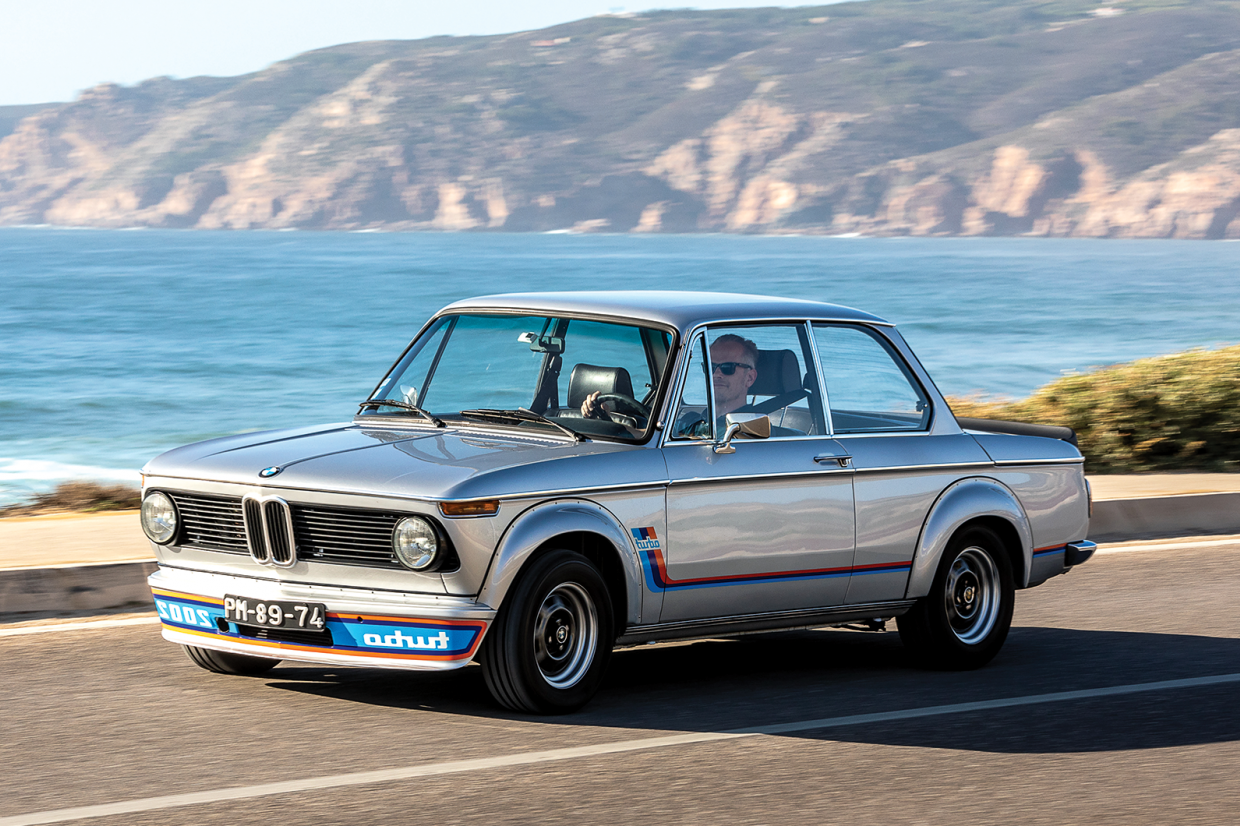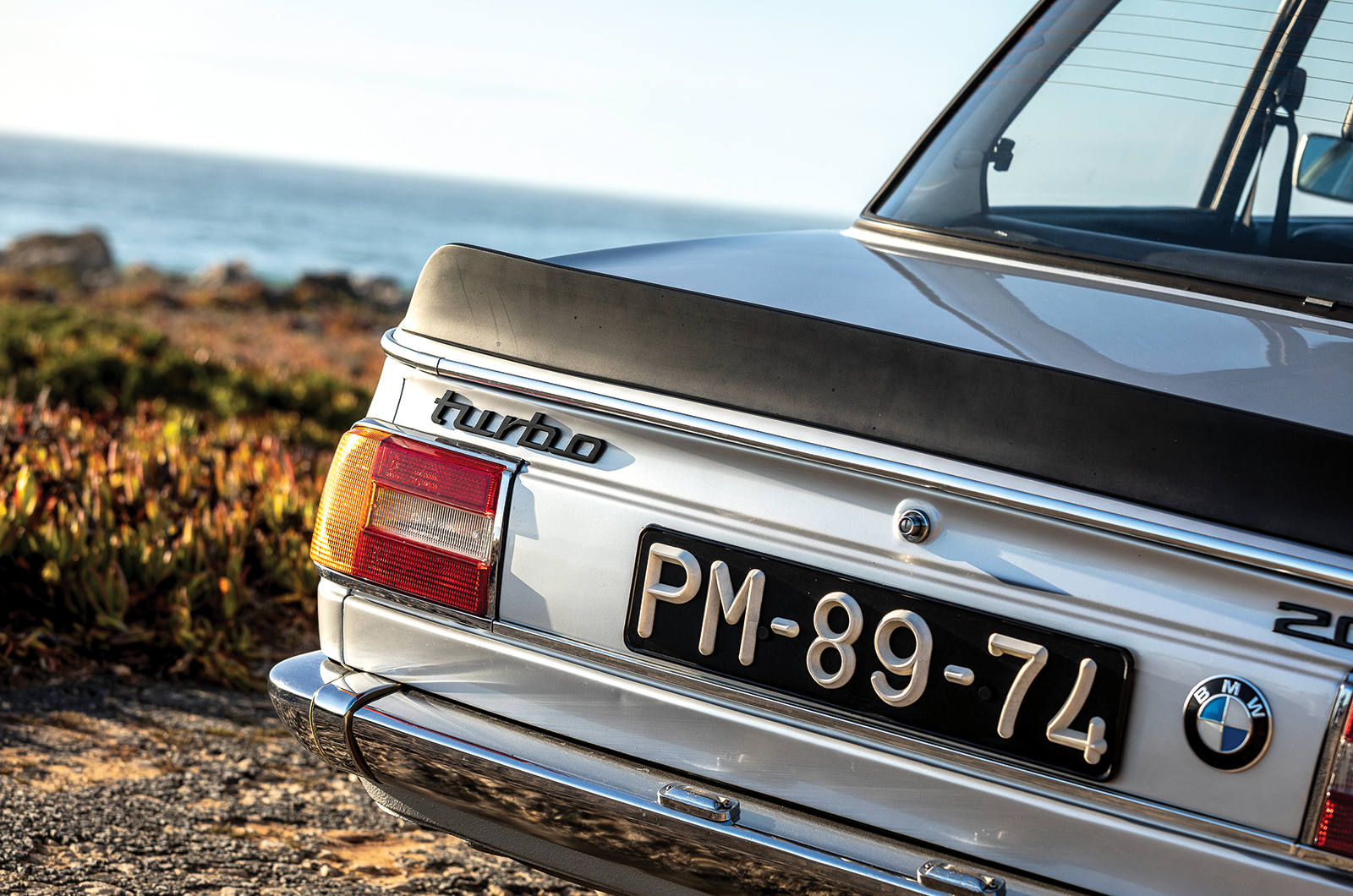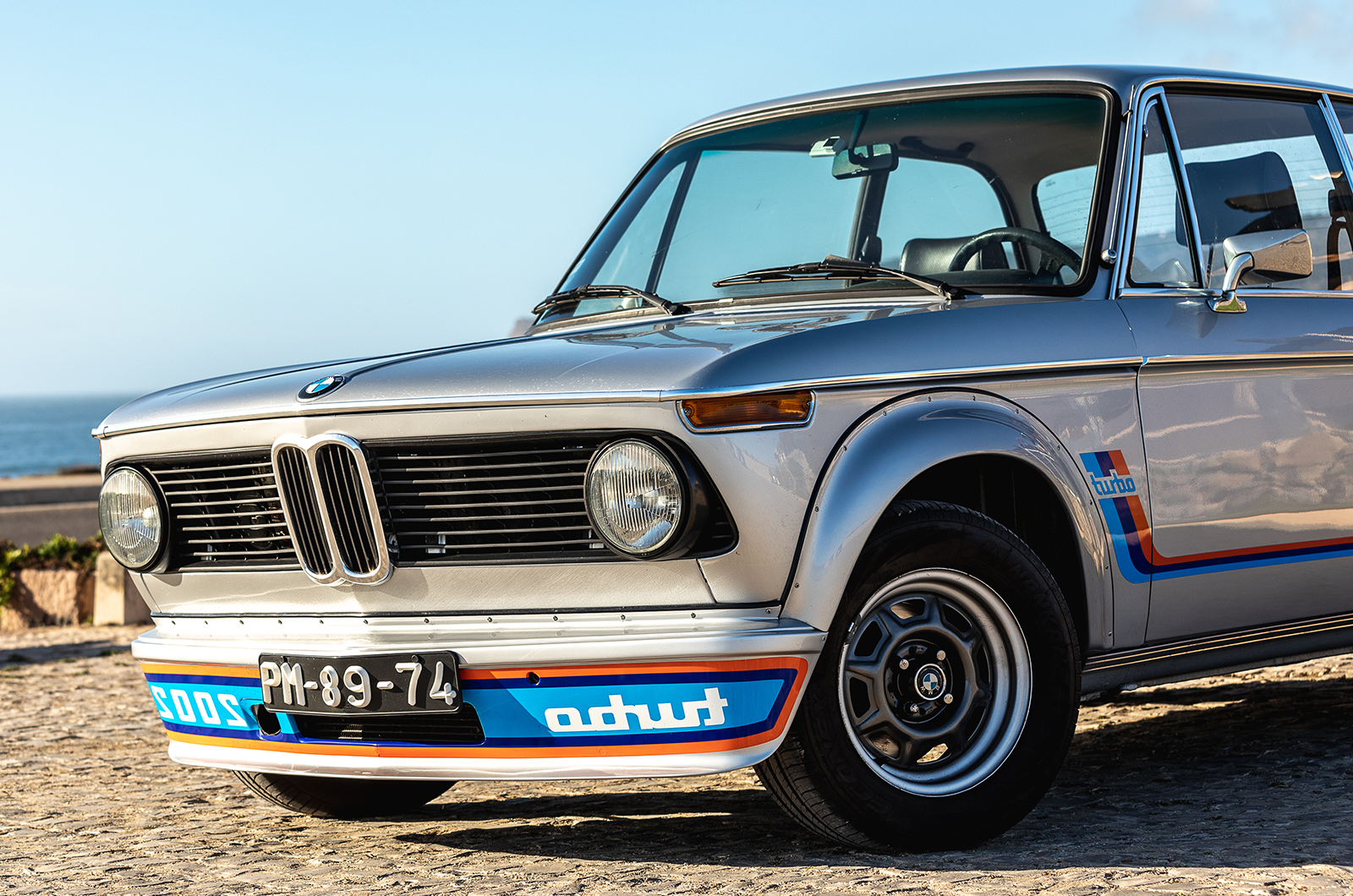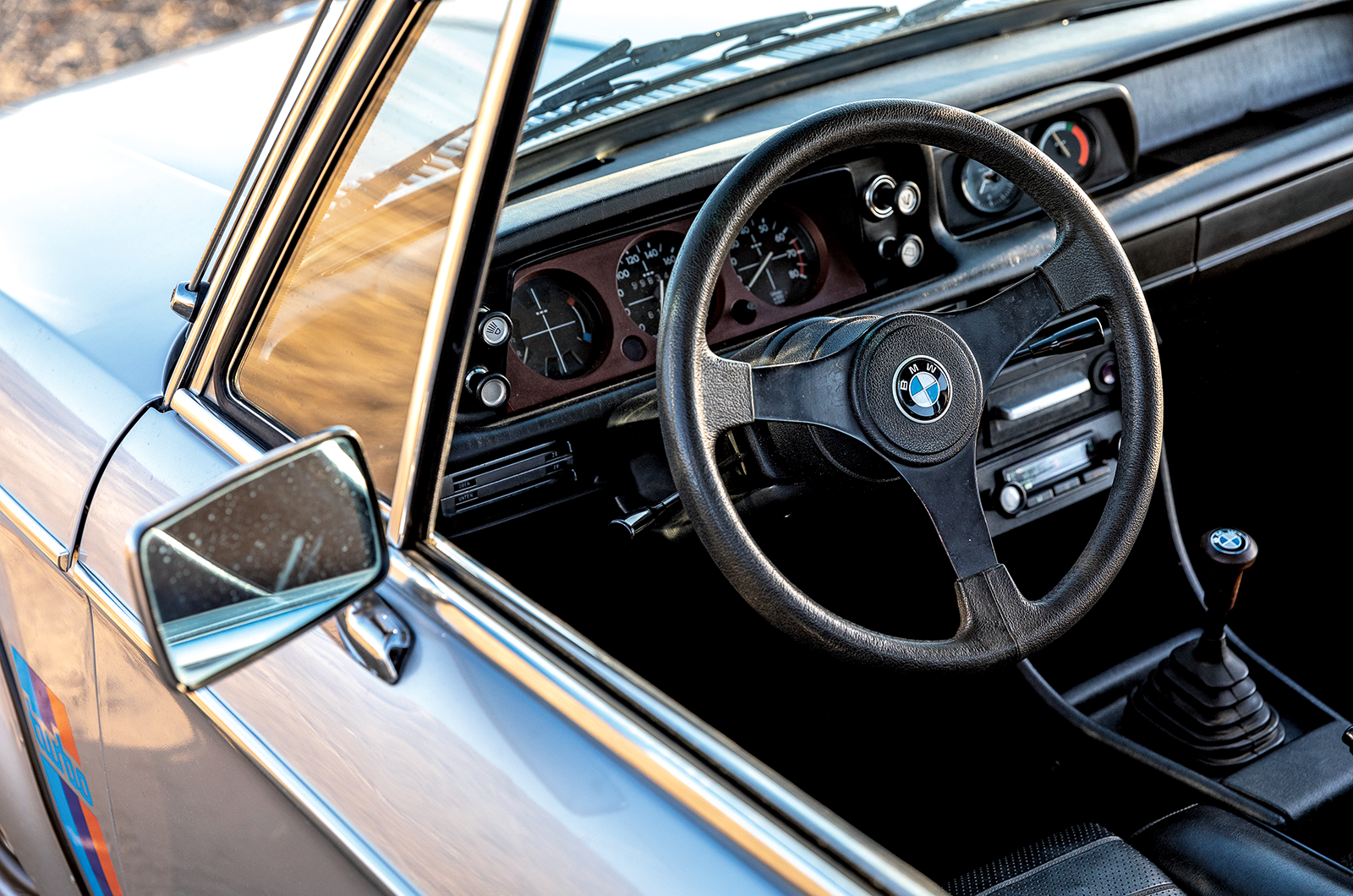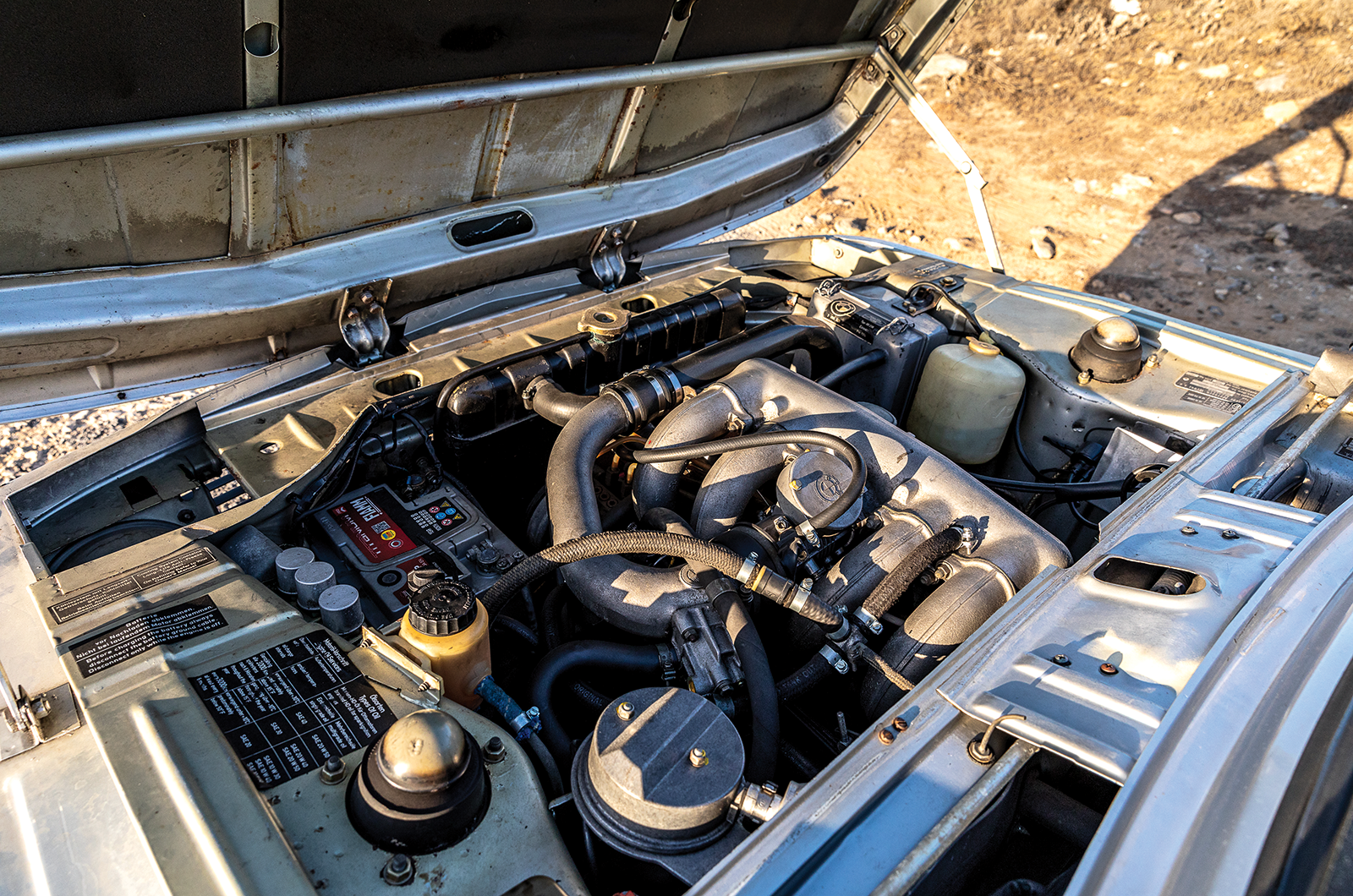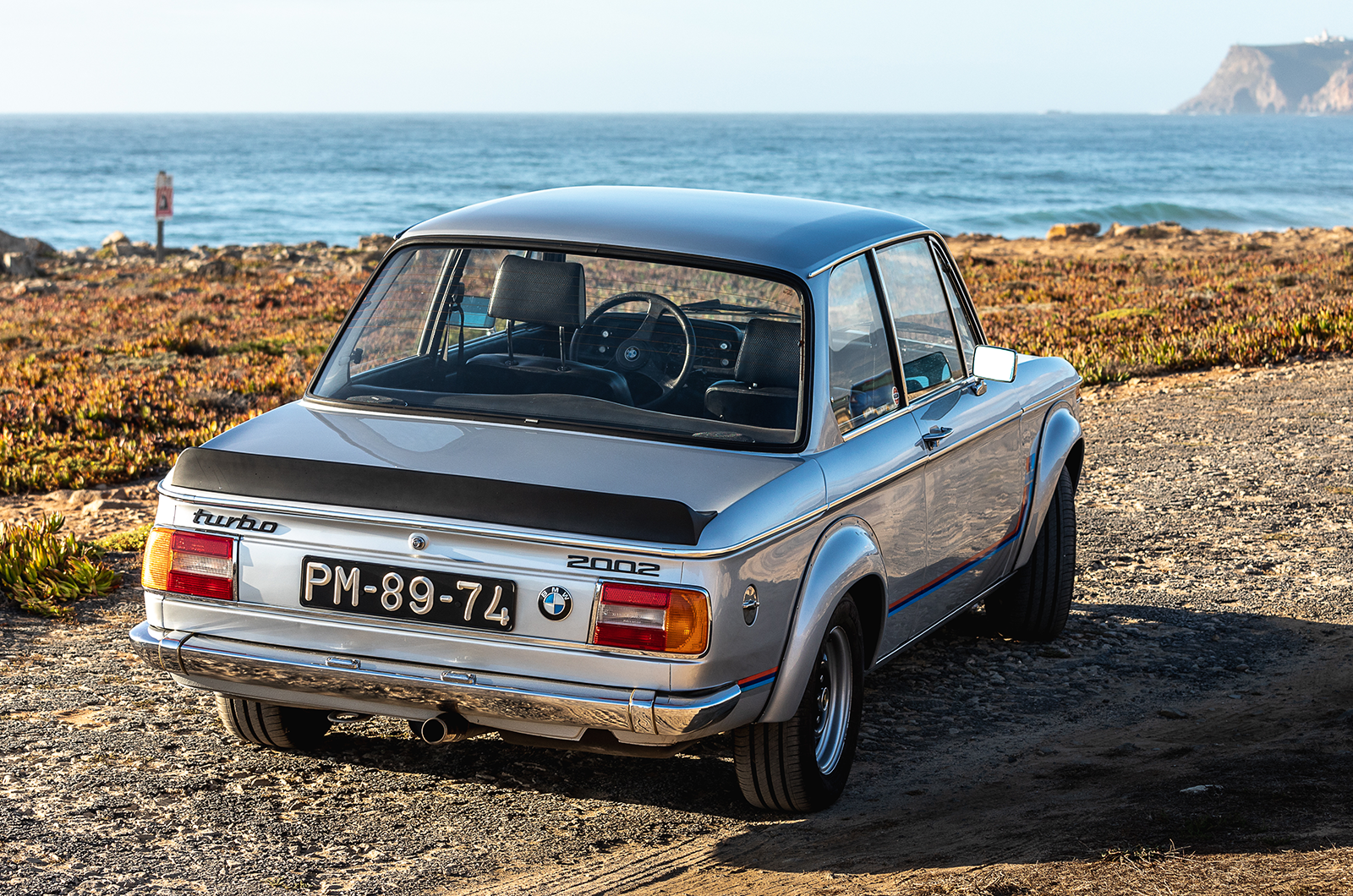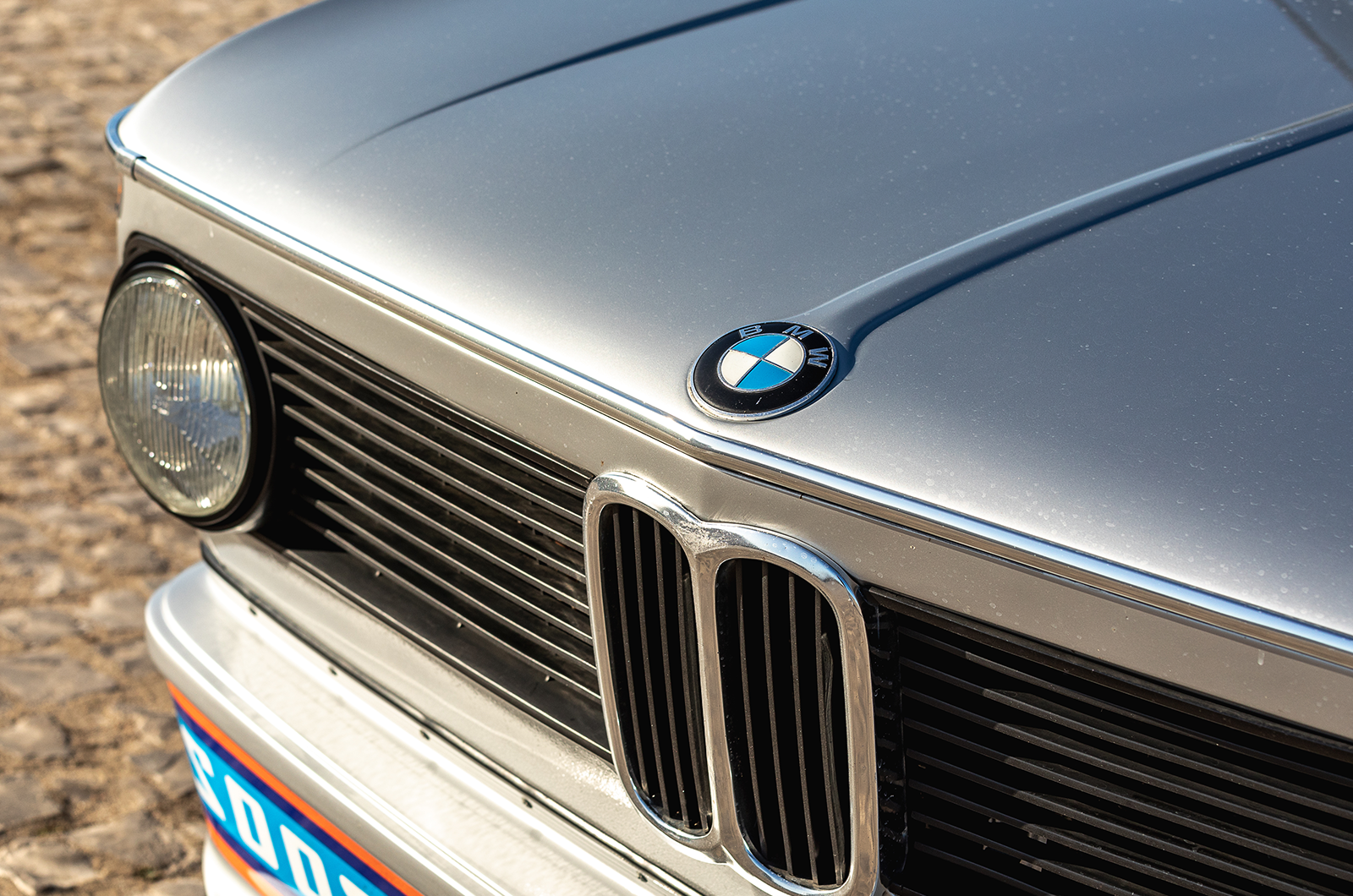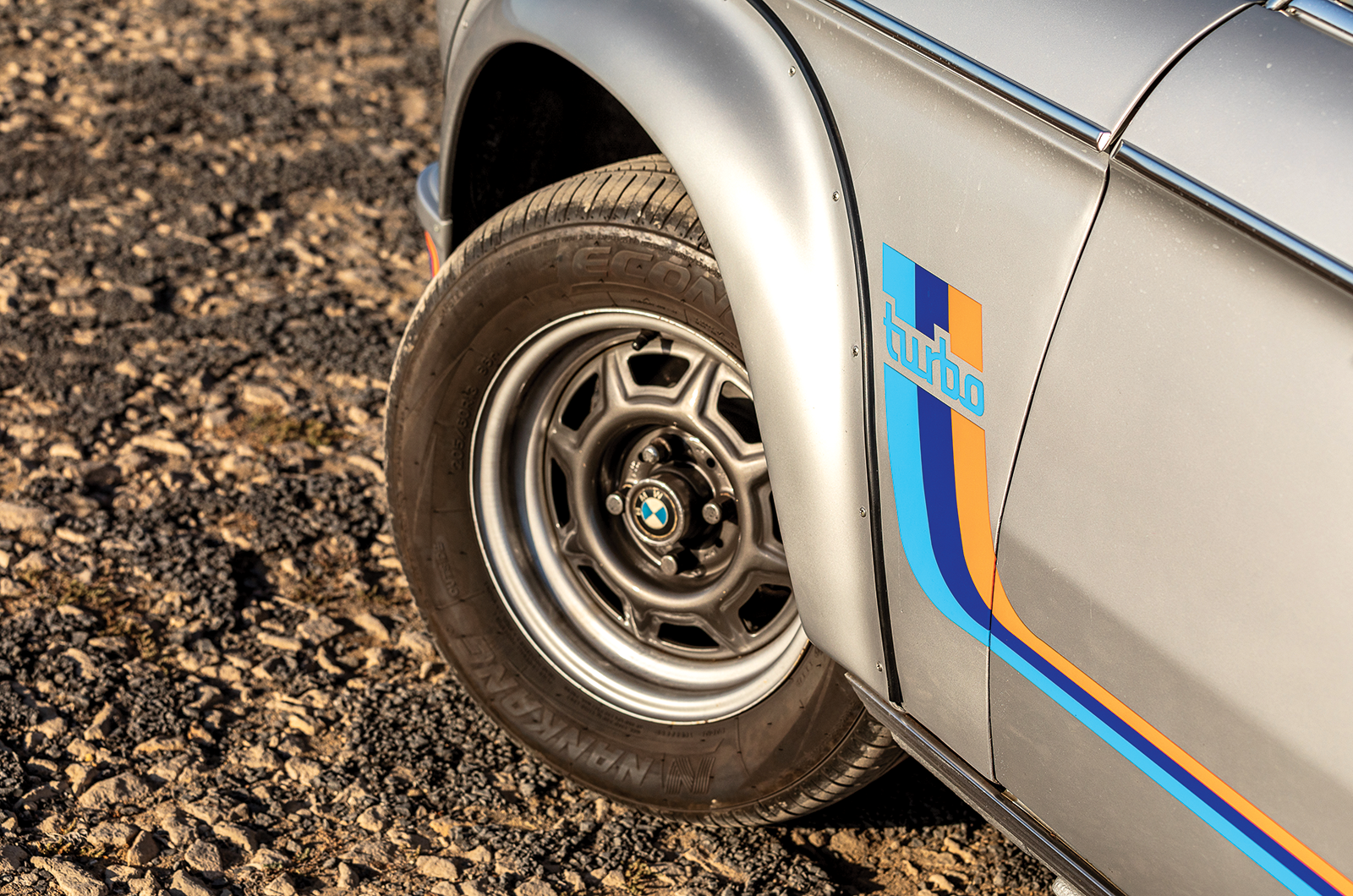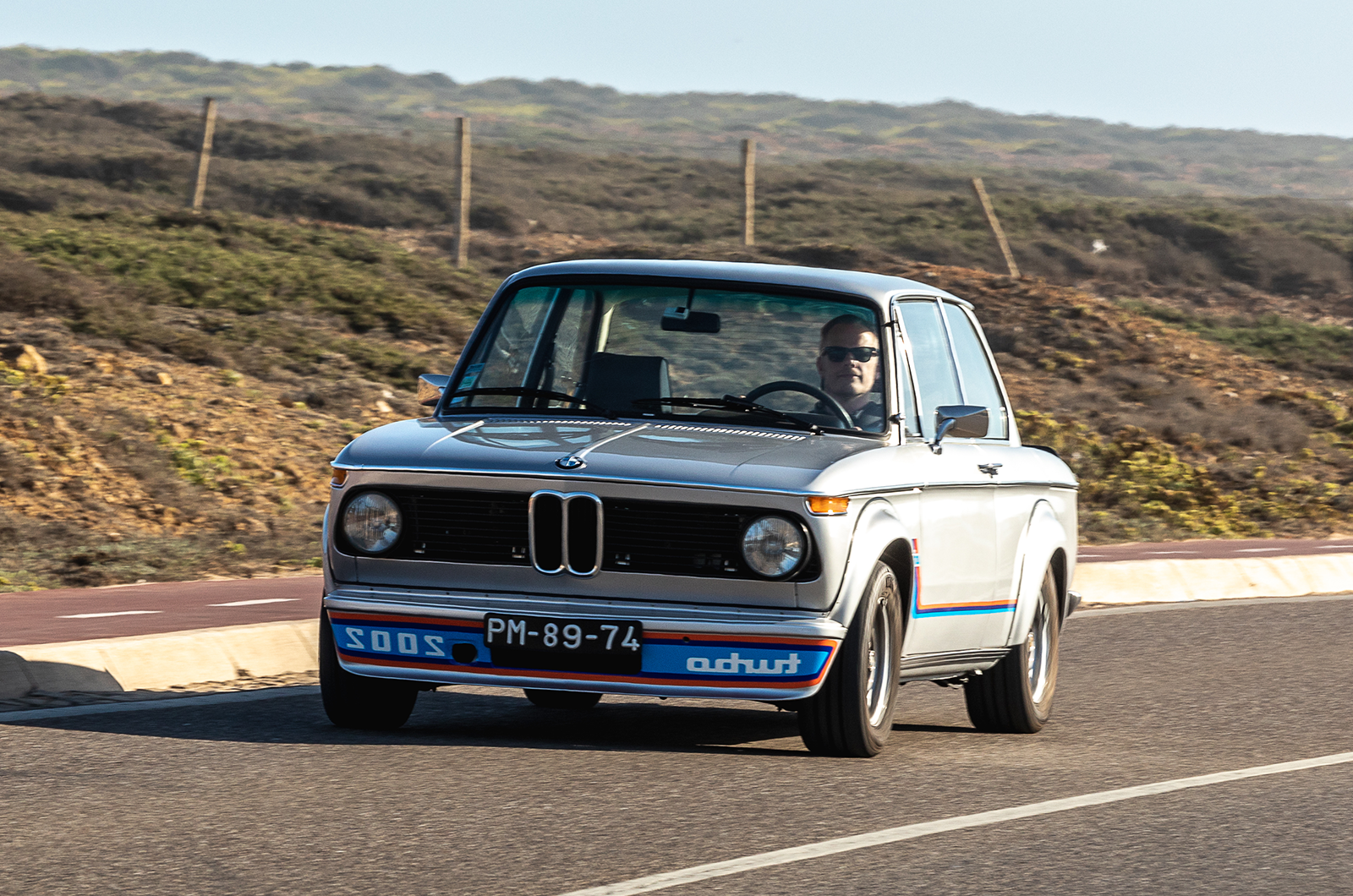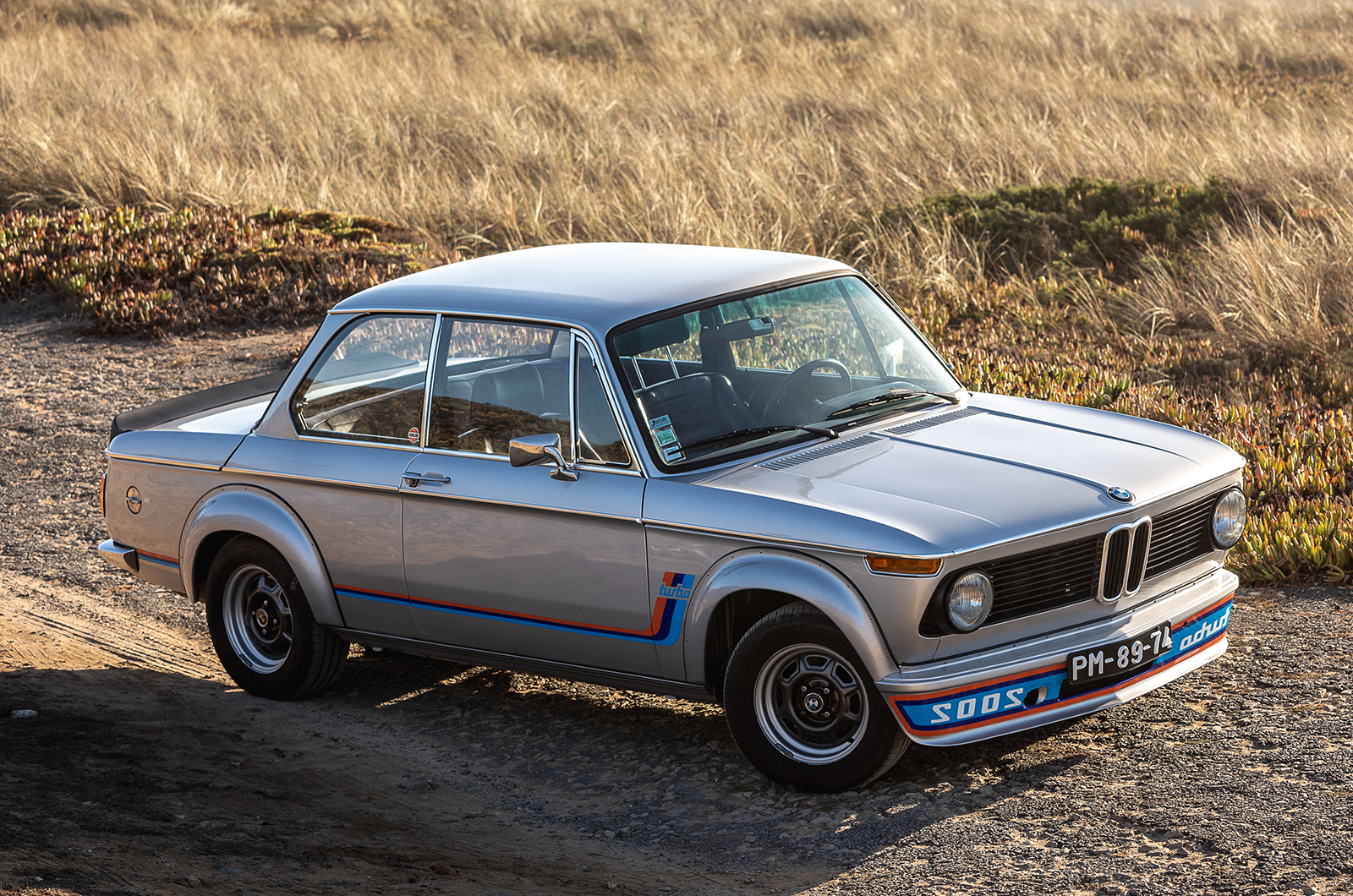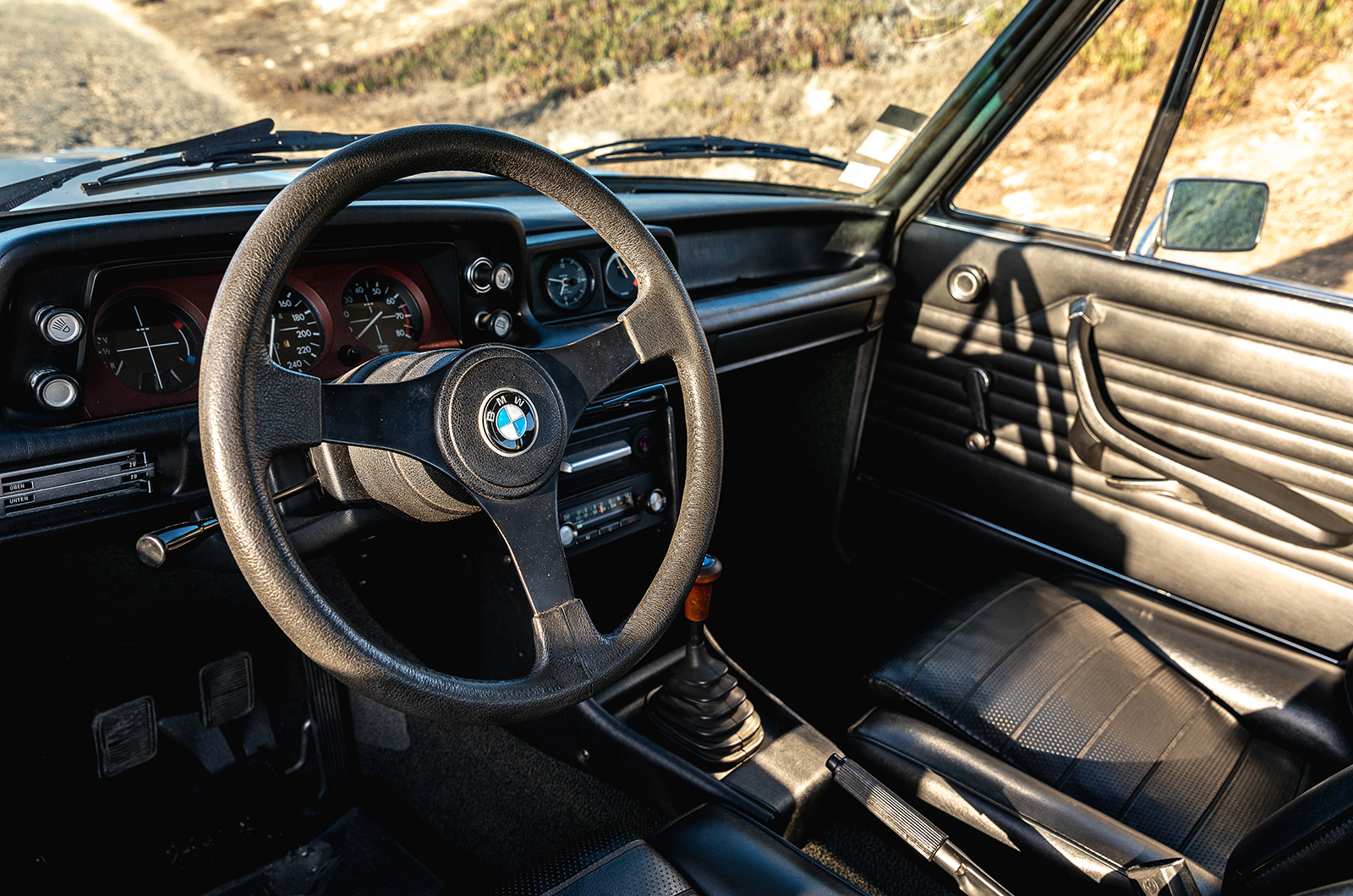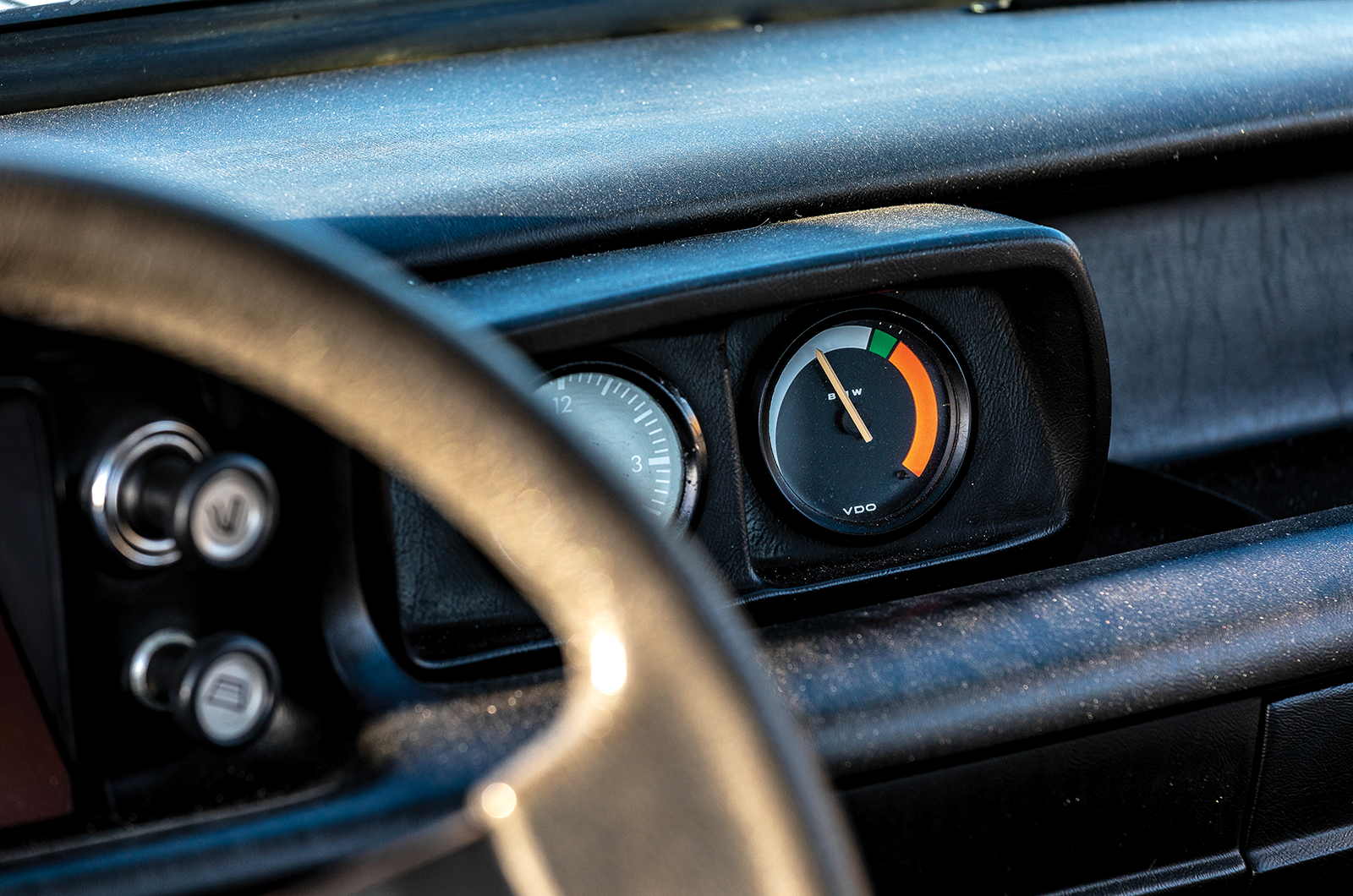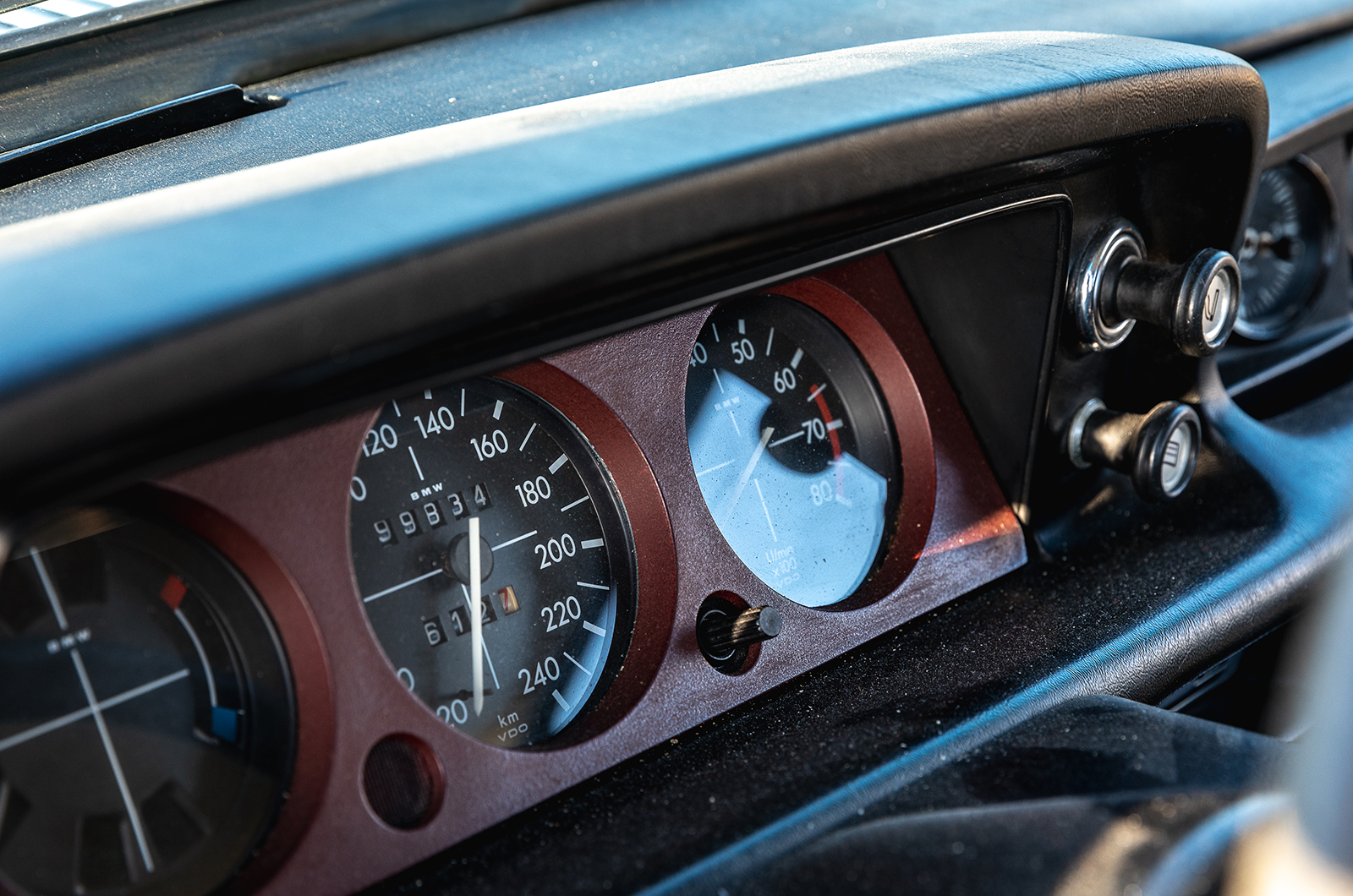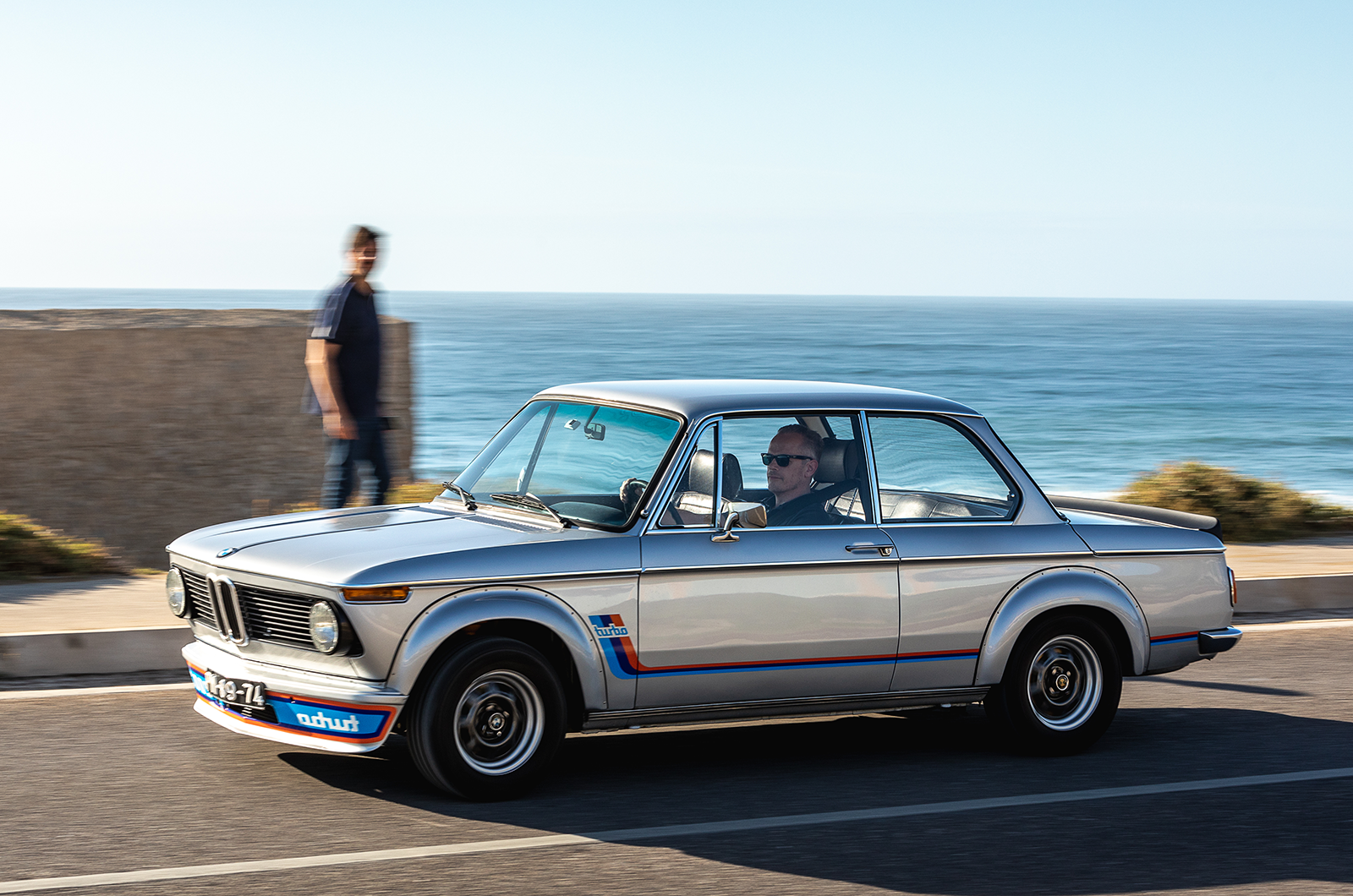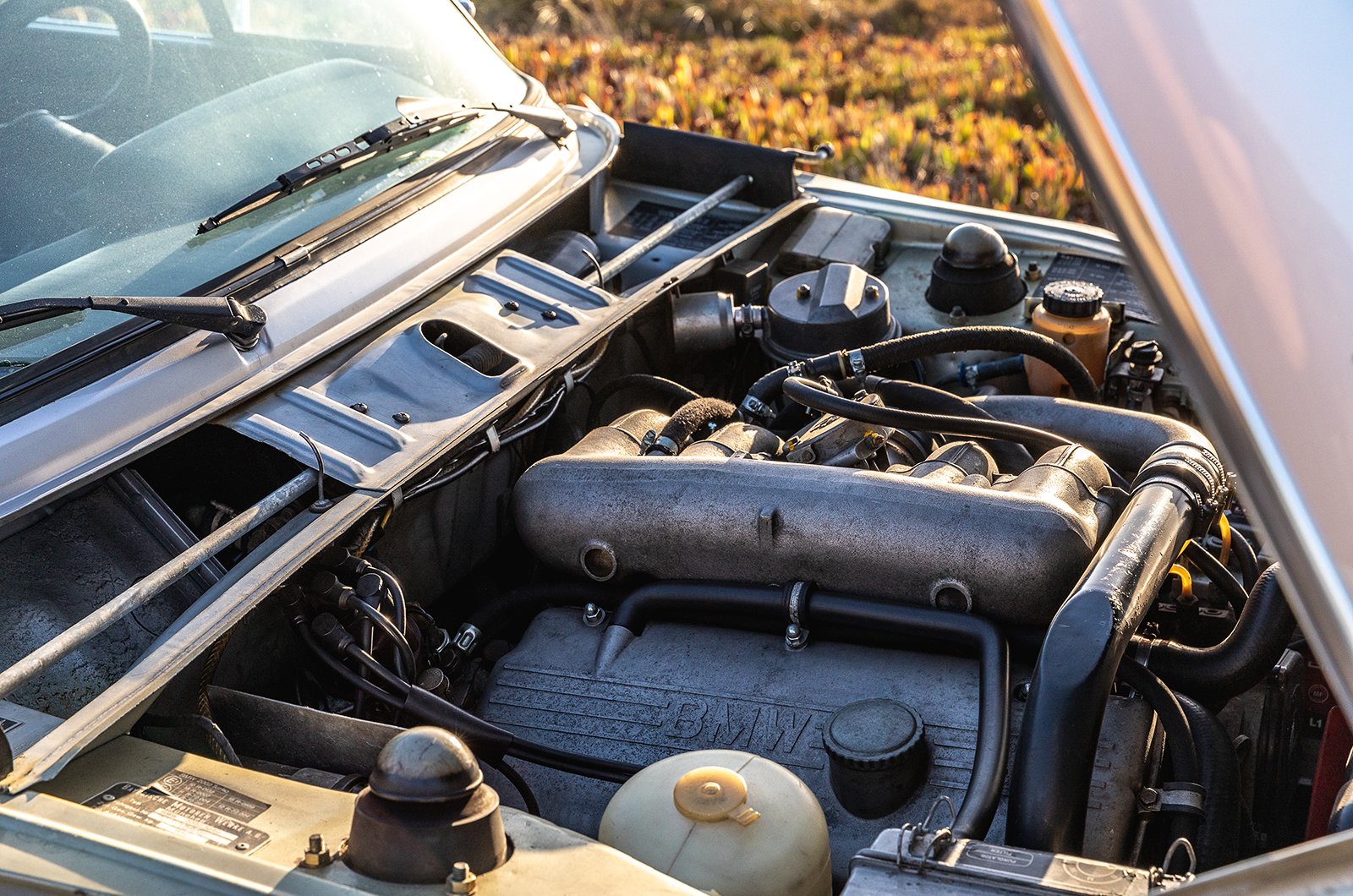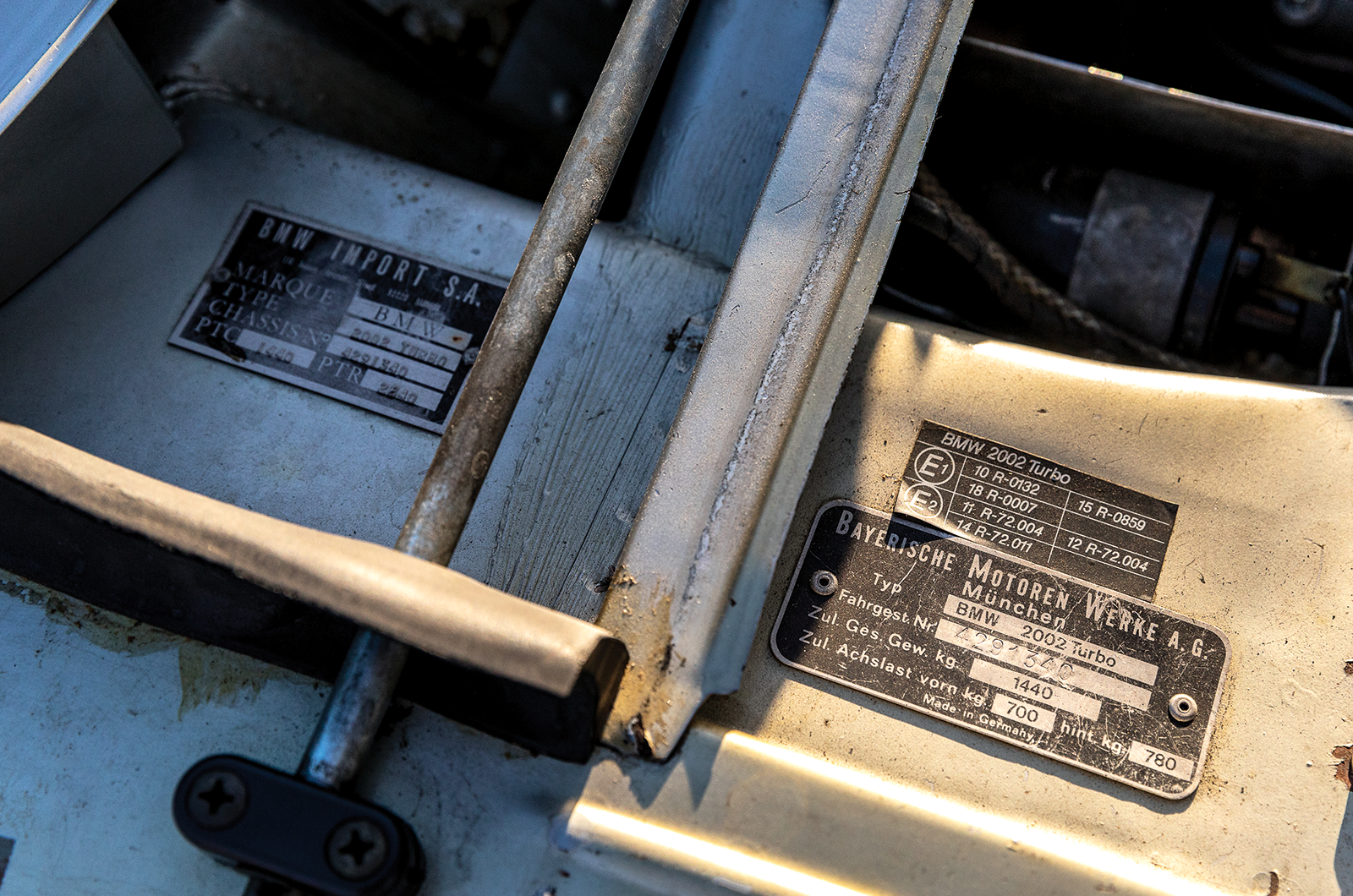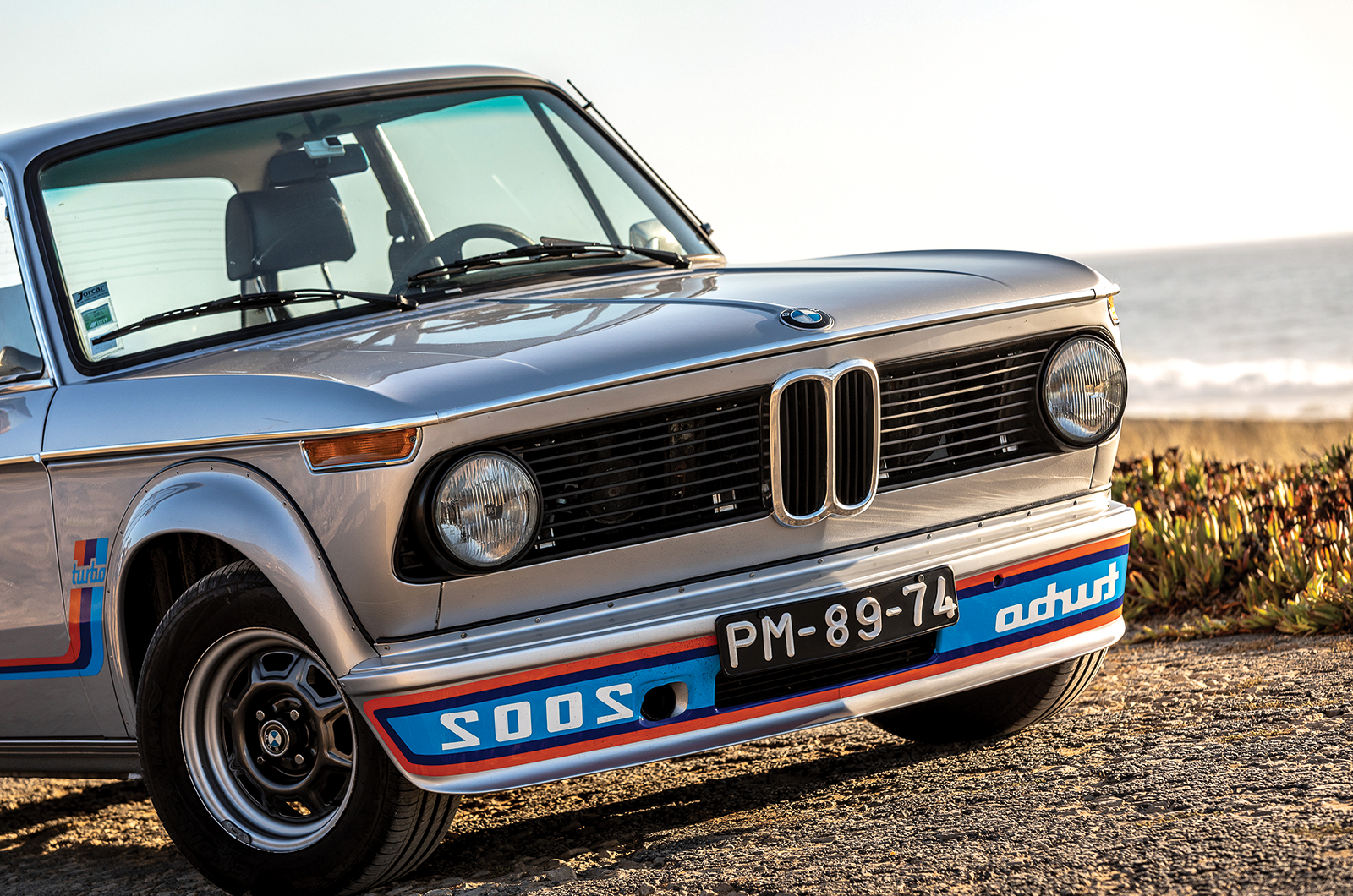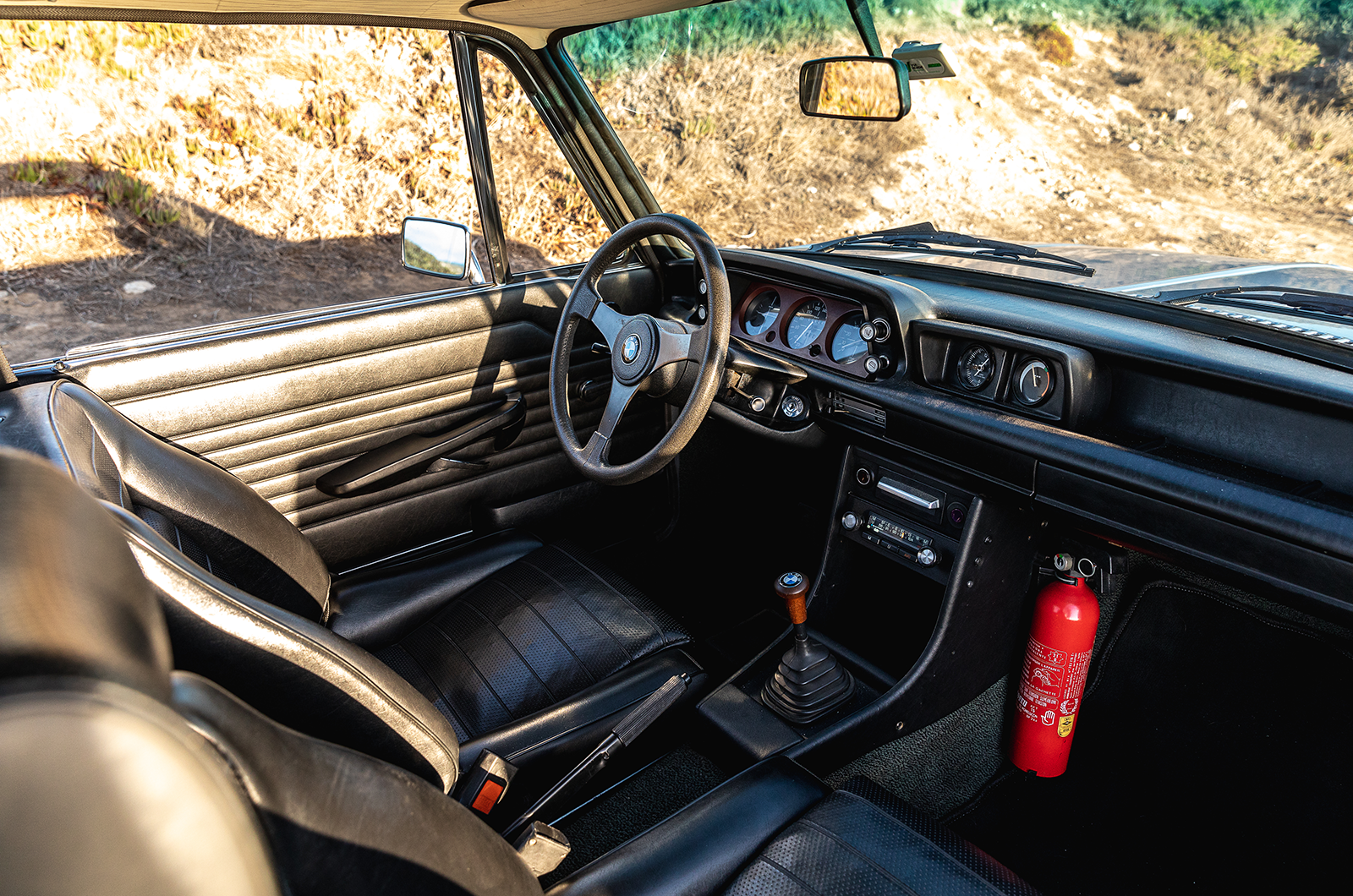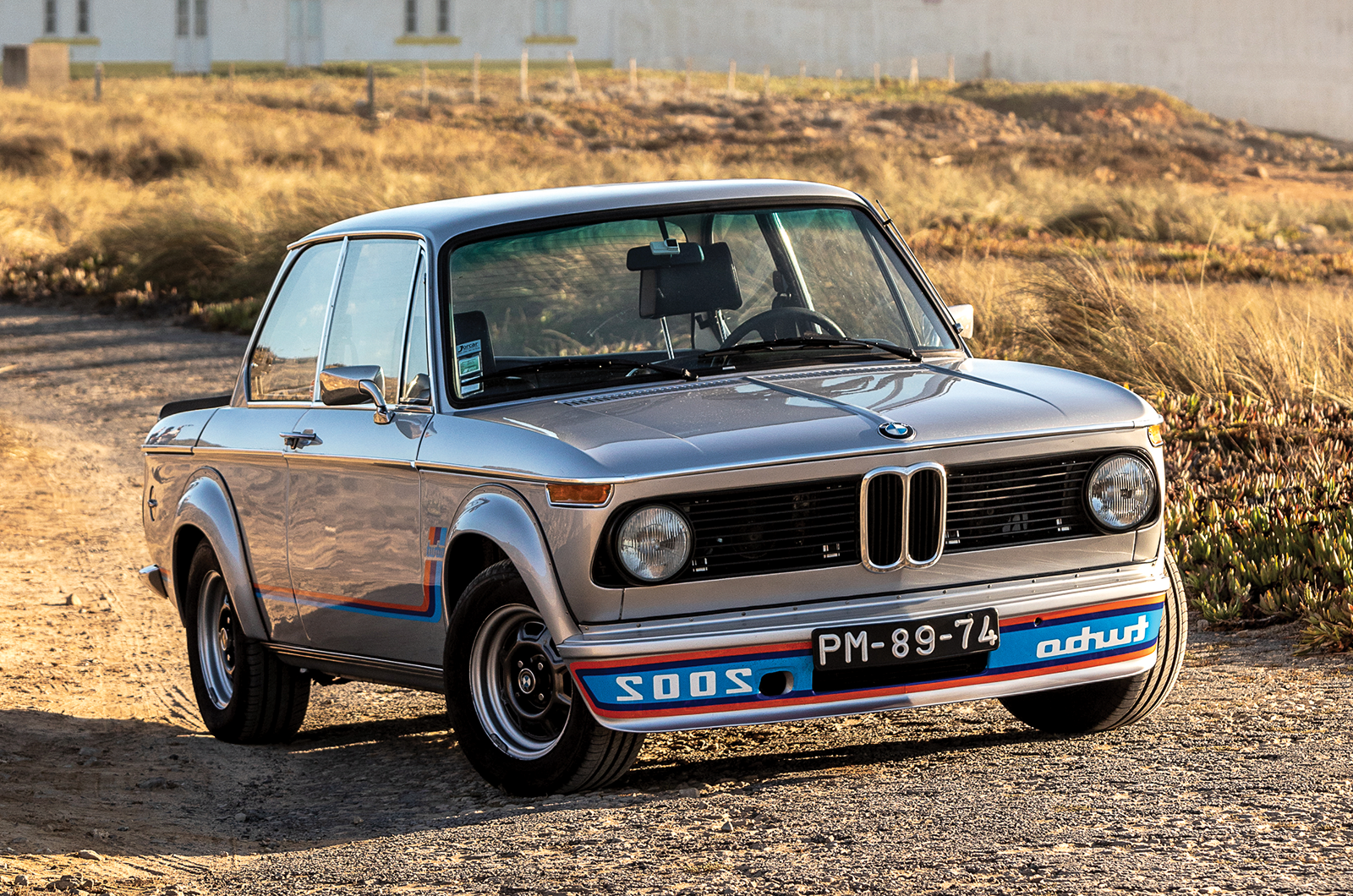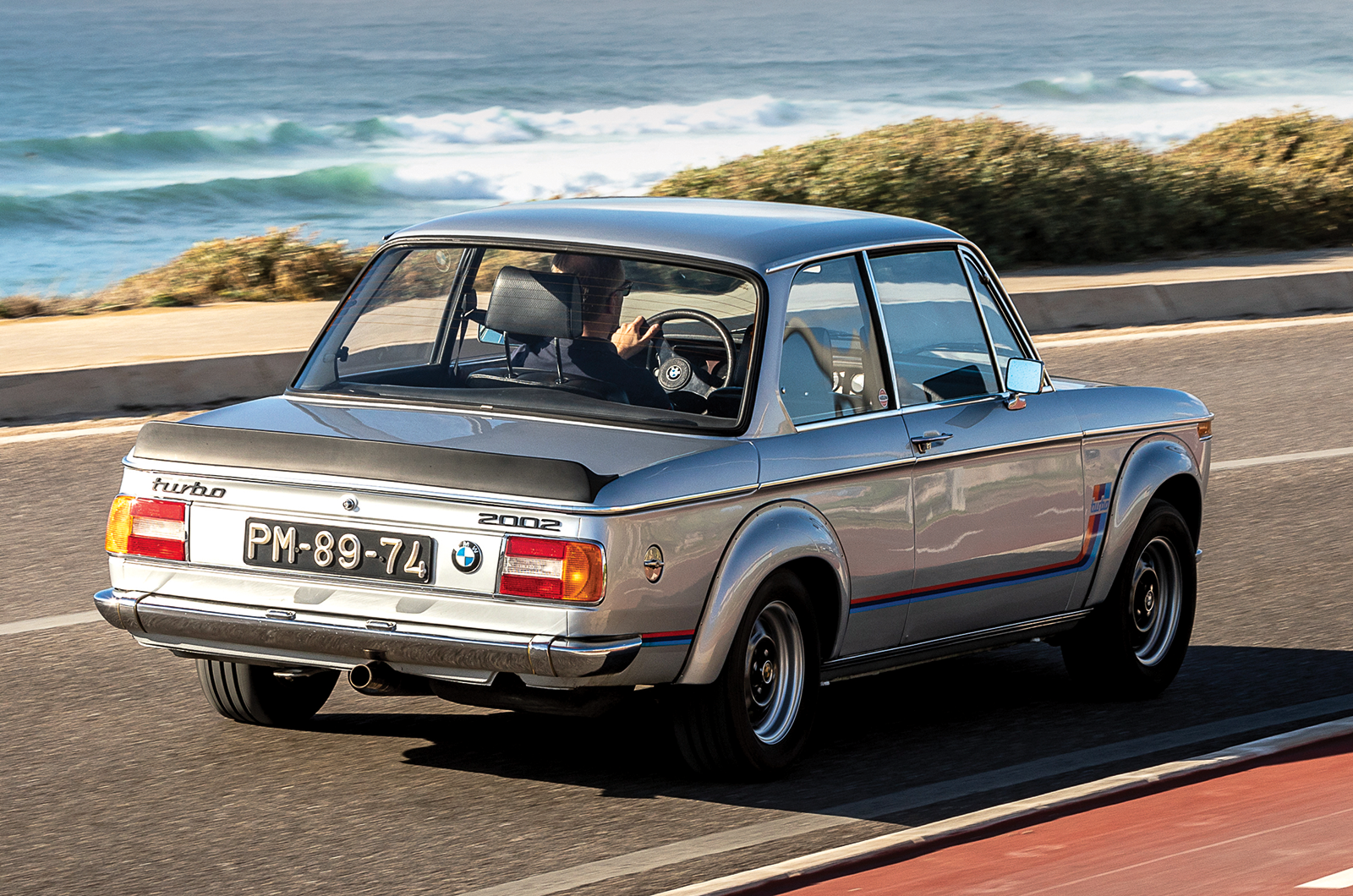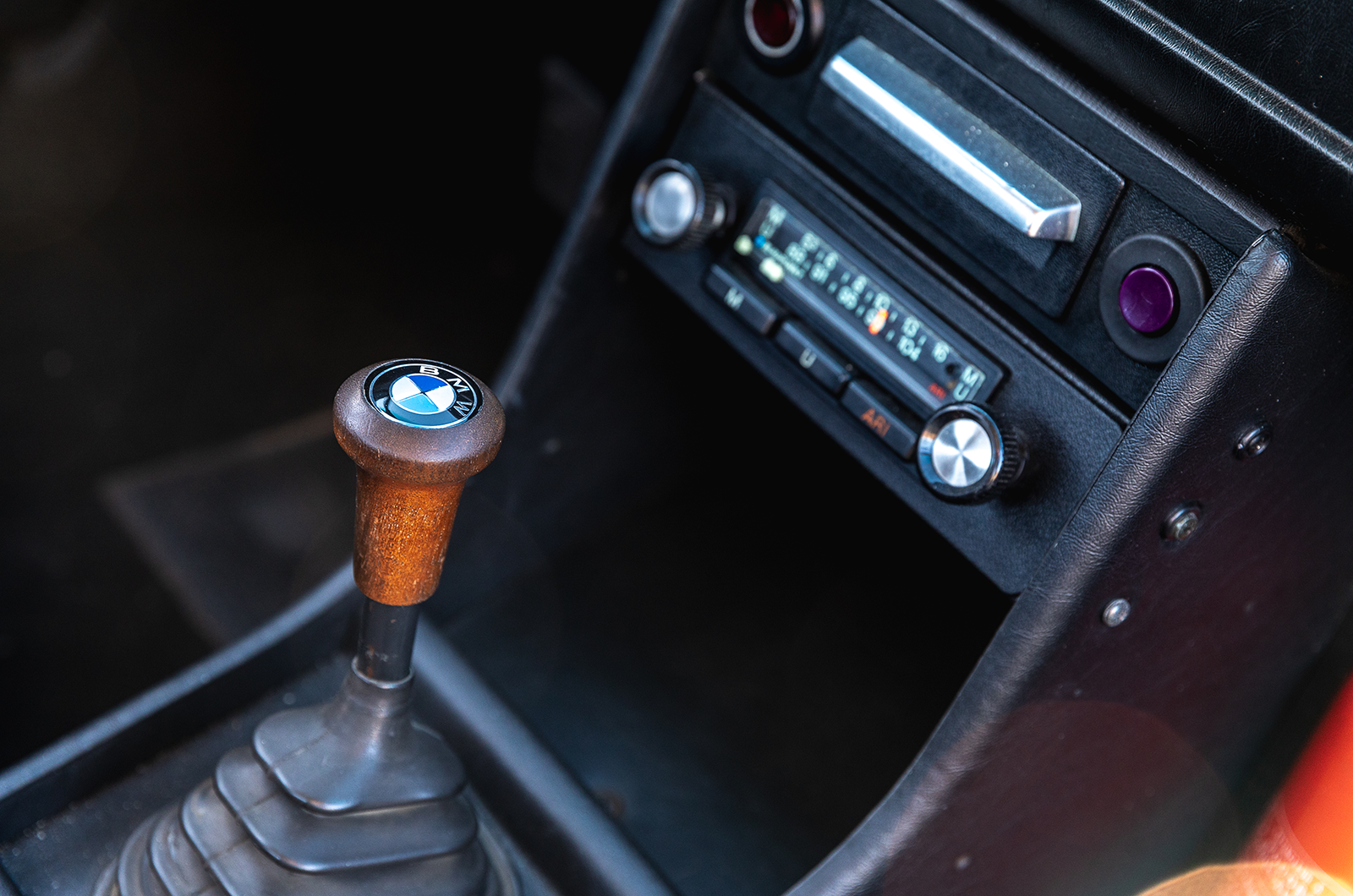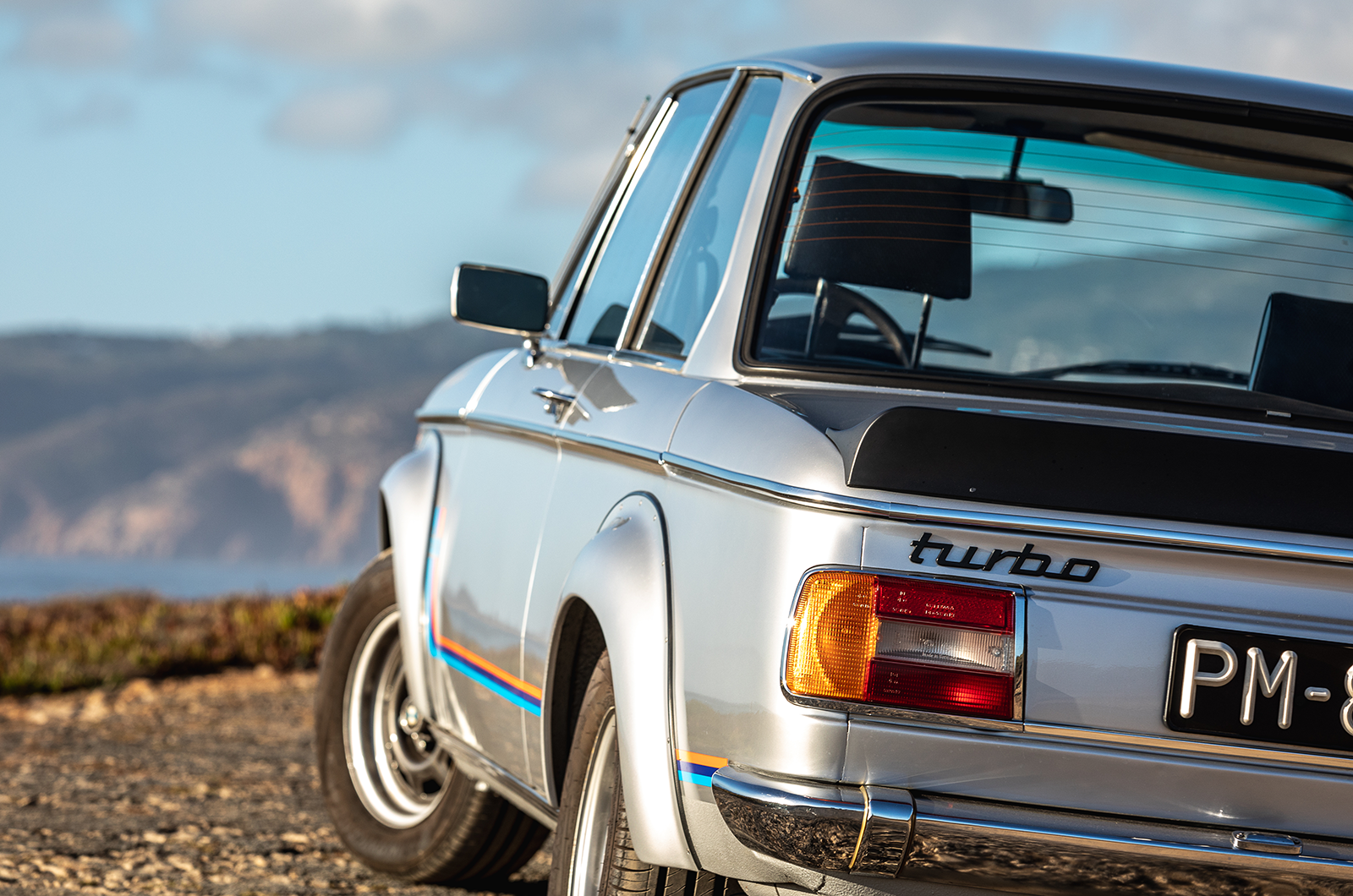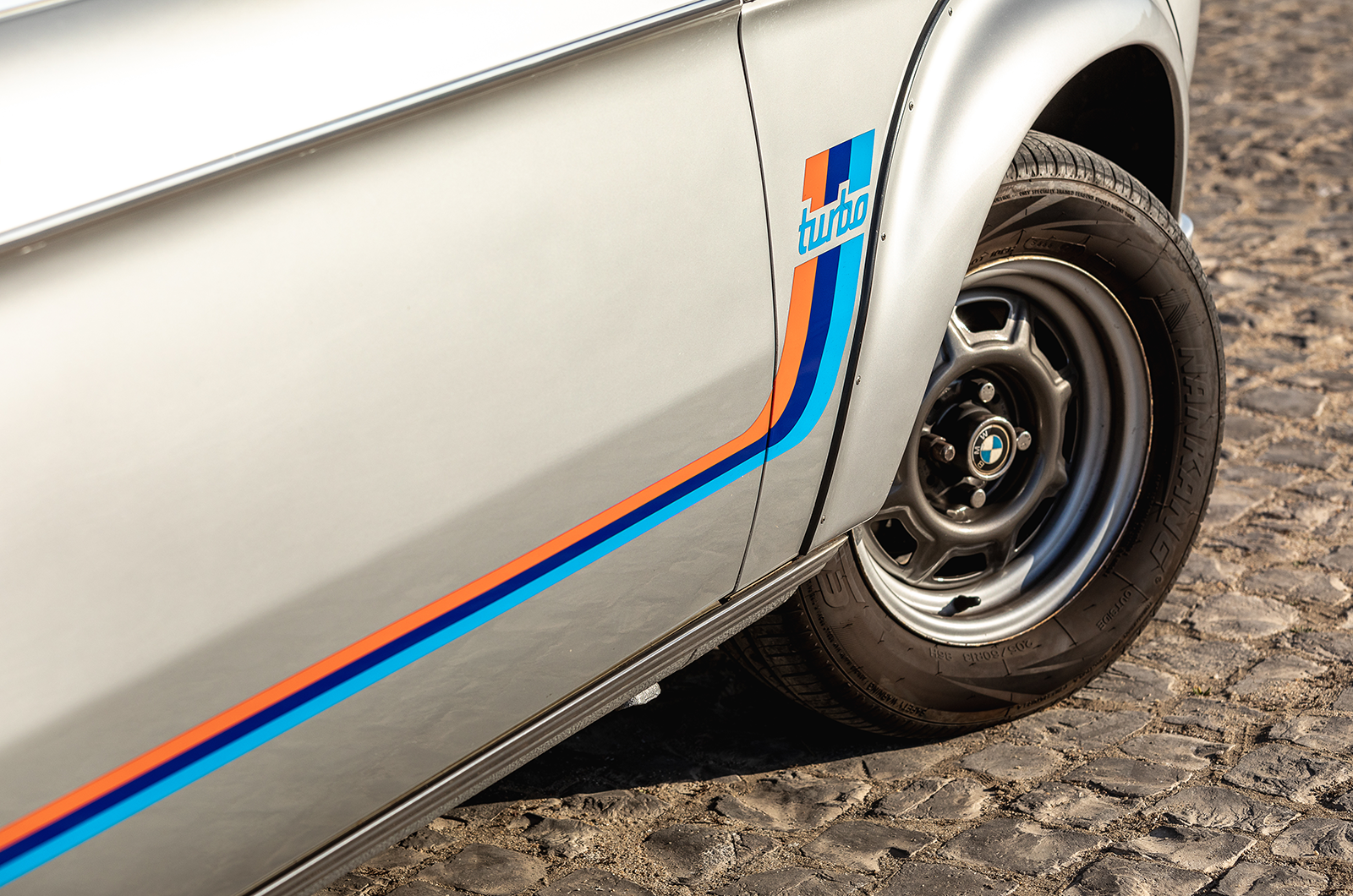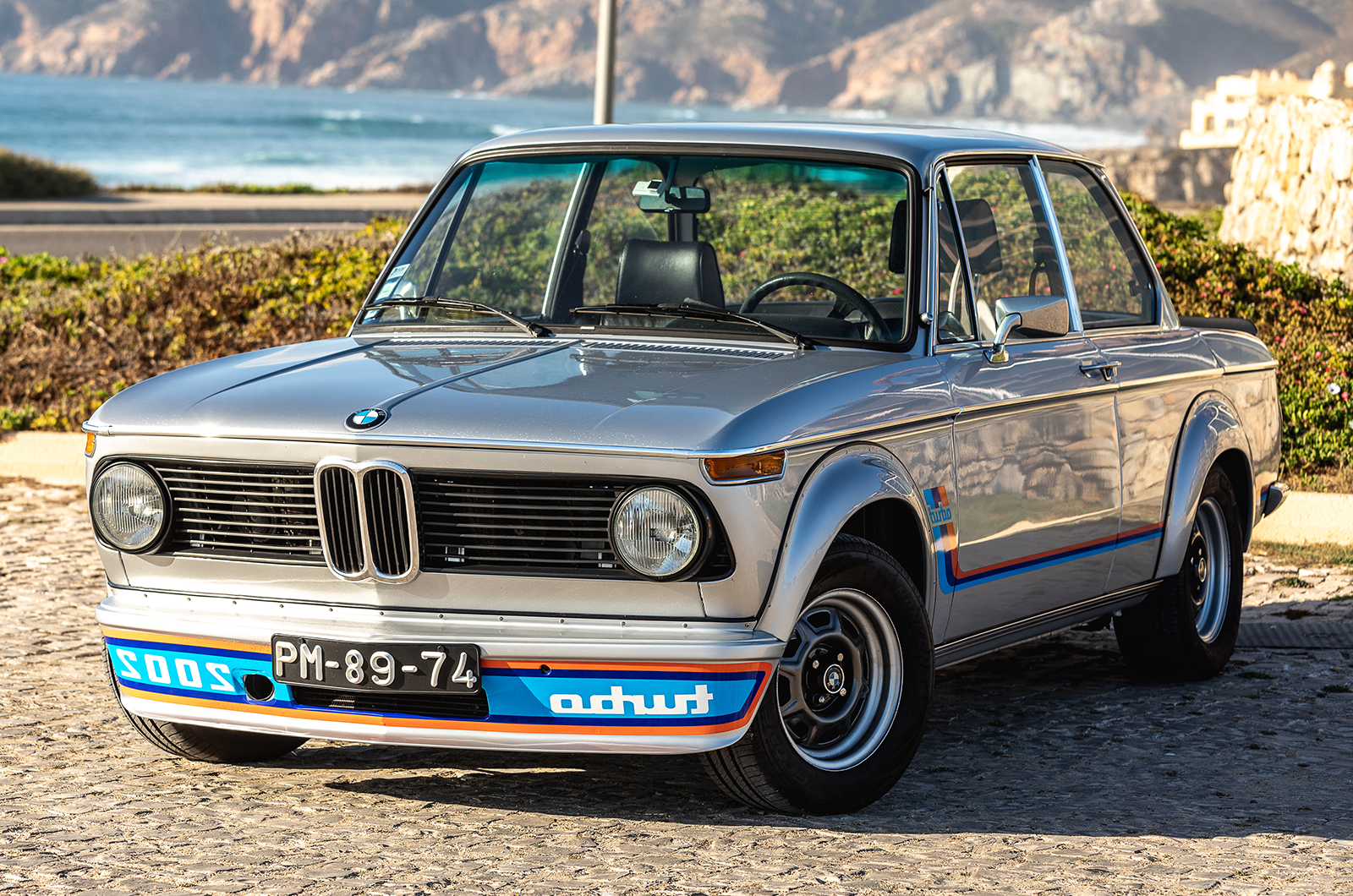It idles happily at 1100rpm, but accelerating hard from a standstill isn’t the order of the day.
This particular example is period-perfect; it’s a driver, too, but our location precludes enthusiastic acceleration.
Past experience of the model, however, informs you that the turbo is at its best once up and running.
The four-speed Getrag gearbox doesn’t like to be rushed, but it is difficult to make a hash of changes (a five-speed unit was also available).
In town, the engine proves smooth and tractable but a bit gutless in the lower reaches.
The Rentrop seats are comfortable
Once the road and conditions permit, however, it will rocket past 60mph before you have changed up from second to third.
There isn’t, though, the harum-scarum turbo blitz you might expect.
The BMW isn’t unruly, but you’re aware of the turbo spooling up, particularly as you nudge 4000rpm and it keeps pulling.
That said, back off, and with the throttle closed for a few seconds but with the engine still above this magic figure, there is a pronounced hesitancy – lag – before it picks up from where it left off.
The BMW looks athletic, even at a standstill
Once it does, the proceeding surge isn’t violent – it has ‘only’ 170bhp, let’s not forget.
Just don’t expect the sort of all-or-nothing, to-infinity-and-beyond shenanigans of most early turbo cars.
This car does have personality. It makes you smile, but what impresses most is the fact that it still feels fast.
Sure, there are umpteen latter-day hatchbacks that would thrash it, but here you are not desensitised from what is happening.
‘The most impressive part is the car’s smooth top-end acceleration; it isn’t buzzy, and there’s a lack of fuss at high-ish cruising speeds’
The most impressive part is the car’s smooth top-end acceleration; it isn’t buzzy, and there’s a lack of fuss at high-ish cruising speeds.
The worm-and-roller steering resolutely chains it to ye olden times, but it has sufficient feel when it matters.
The BMW also corners much as you remember, feeling stable under braking with a slight tendency to tuck into bends if power is reduced.
The four-speed Getrag ’box requires considered inputs
Read any contemporary report and they are full of stories of derring-do and driving the turbo on its lock-stops.
Somewhere south of ten-tenths, and in the here and now, we didn’t get to find out.
The steering is relatively heavy, and you need to dutifully build the boost in second gear and power out of a tight second-gear corner to get so much as a chirrup out of the rear tyres.
The lack of drama could, however, be down to the paucity of talent on the part of the driver.
Either way, the ’02 feels nicely balanced and faithful with it.
The BMW 2002 turbo has a relaxed side that’s at odds with its riotous bodywork
The turbocharger also renders the BMW well-suited to motorway cruising, and it is good-natured at 70mph in top. You can hold a conversation.
On the debit side, the ride is on the firm side of unyielding, which rather goes with the territory, but it is still miles better than many recent sports saloons, for which meaningful suspension travel is apparently an optional extra.
The disc/drum brakes work well, too, with excellent pedal feel.
Even this, the briefest of catch-ups, serves as a reminder of how the 2002 turbo is a born entertainer, but one that isn’t overpowering.
You don’t need to stay on top of it all the time; you can relax.
Were it not for the fuel crisis, the turbo would have made far more of an impact – and sold in far greater numbers
It has a few rough edges, but it is hard not to emerge smitten by what constitutes a rare failure in the Munich marque’s canon.
That said, failure is a relative term.
The turbo succeeded on its own merits, but the timing of its arrival was comically awful.
You could also argue the world was perhaps not ready for a 2002 that cost almost twice as much as a tii.
What is telling is that, with the 3 Series due to arrive in 1975, the ’02 in its many flavours was already on its way out.
The turbo represented one final roll-out party favour. It just goes to show that glowing embers burn hottest.
Images: Bernardo Lucio
Factfile
BMW 2002 turbo
- Sold/number built 1973-’74/1672
- Construction steel monocoque
- Engine iron-block, alloy-head, sohc 1990cc ‘four’, with KKK turbocharger and Kugelfischer mechanical fuel injection
- Max power 170bhp @ 5800rpm
- Max torque 178lb ft @ 4000rpm
- Transmission four/five-speed manual, RWD
- Suspension independent, at front by MacPherson struts rear semi-trailing arms, coils, telescopic dampers; anti-roll bar f/r
- Steering worm and roller
- Brakes discs front, drums rear, with servo
- Length 13ft 10in (4219mm)
- Width 5ft 6¾in (1621mm)
- Height 4ft 7½in (1410mm)
- Wheelbase 8ft 2½in (2499mm)
- Weight 2380lb (1034kg)
- 0-60mph 7.5 secs
- Top speed 131mph
- Mpg 19.5
- Price new DM18,720
- Price now £75-150,000*
*Prices correct at date of original publication
Enjoy more of the world’s best classic car content every month when you subscribe to C&SC – get our latest deals here
READ MORE
26 turbocharged heroes
Wild bunch: Saab 99 vs Porsche 911 vs BMW 2002
How Renault turbocharged F1
Renault 5 GT turbo vs Lancia Delta HF turbo ie: small cars, big punch
Richard Heseltine
Richard Heseltine is a long-time contributor to Classic & Sports Car
